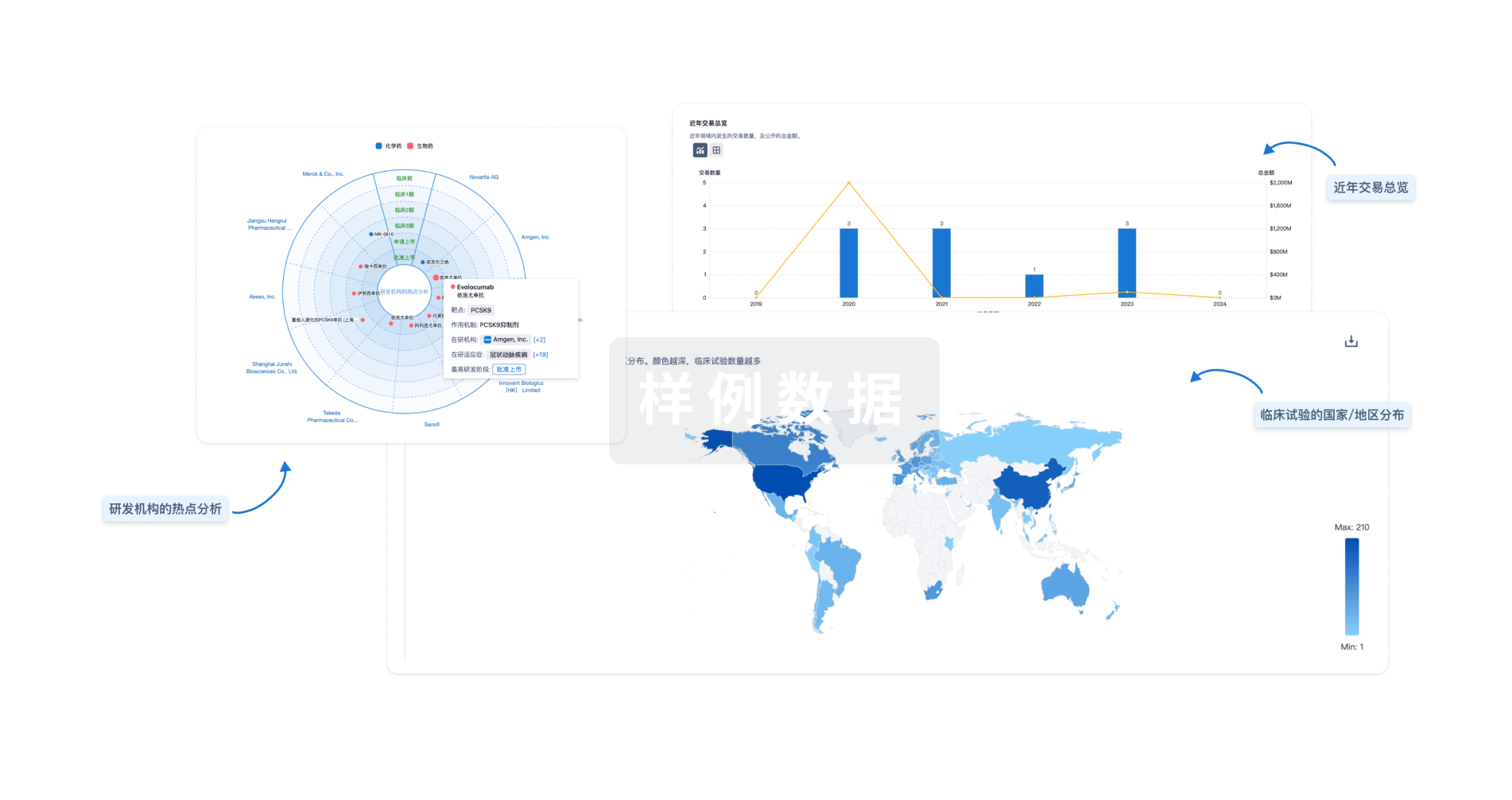预约演示
更新于:2025-05-07
登革热E蛋白
更新于:2025-05-07
基本信息
别名- |
简介- |
关联
1
项与 登革热E蛋白 相关的药物靶点 |
作用机制 登革热E蛋白抑制剂 |
在研机构 |
原研机构 |
在研适应症 |
非在研适应症- |
最高研发阶段临床2期 |
首次获批国家/地区- |
首次获批日期1800-01-20 |
2
项与 登革热E蛋白 相关的临床试验NCT06551844
Adaptive Dengue Antiviral Platform Trial (ADAPT): a Phase 2 Randomized, Adaptive, Open Label Trial for Antiviral Screening in Patients With Early Symptomatic Dengue
This is a randomized, open-label adaptive platform trial aiming to screen the antiviral effectiveness of the experimental drug(s) in early dengue infection
* Primary objectives:
* To determine the antiviral effectiveness of the experimental drug(s) in early dengue infection
* To assess the safety and tolerability of the experimental drug(s) in dengue patients
* Secondary objective:
* To assess the effect of the experimental drug(s) in dengue patients on physiological, clinical and virological parameters
* Primary objectives:
* To determine the antiviral effectiveness of the experimental drug(s) in early dengue infection
* To assess the safety and tolerability of the experimental drug(s) in dengue patients
* Secondary objective:
* To assess the effect of the experimental drug(s) in dengue patients on physiological, clinical and virological parameters
开始日期2025-09-01 |
NCT03883620
A Phase I, Partially Blind (Observer-blind), Randomized, Single Dose Ascending Study of Dengue Monoclonal Antibody (Dengushield) in Healthy Adults
This Phase 1 study to evaluate the safety of a single dose of Dengushield (dengue monoclonal antibody) in healthy adults.
开始日期2019-03-22 |
申办/合作机构 |
100 项与 登革热E蛋白 相关的临床结果
登录后查看更多信息
100 项与 登革热E蛋白 相关的转化医学
登录后查看更多信息
0 项与 登革热E蛋白 相关的专利(医药)
登录后查看更多信息
4
项与 登革热E蛋白 相关的文献(医药)2021-05-01·Virology3区 · 医学
On the role of surrounding regions in the fusion peptide in dengue virus infection
3区 · 医学
Article
作者: Nobre, Thatyane M ; Cilli, Eduardo M ; Bong, Dennis ; Oliveira, Osvaldo N ; Cespedes, Graziely F
2018-09-14·ACS Infectious Diseases2区 · 医学
Discovery of Immunologically Inspired Small Molecules That Target the Viral Envelope Protein
2区 · 医学
Article
作者: Lian, Wenlong ; Potisopon, Supanee ; Kwiatkowski, Nicholas P. ; Rahmeh, Amal ; Gray, Nathanael S. ; Li, Pi-Chun ; Jang, Jaebong ; Wang, Jinhua ; Yang, Priscilla L.
2017-12-01·Plant Biotechnology Journal1区 · 工程技术
Molecular engineering and plant expression of an immunoglobulin heavy chain scaffold for delivery of a dengue vaccine candidate
1区 · 工程技术
ArticleOA
作者: Webster, Gina R. ; Paul, Matthew John ; Reljic, Rajko ; Yang, Moon‐Sik ; Copland, Alastair ; Reyes‐del Valle, Jorge ; Ma, Julian K. ; Van Dolleweerd, Craig ; Ceballos‐Olvera, Ivonne ; Hofmann, Sven ; Jang, Yong‐Suk ; Kim, Mi‐Young ; Julik, Emily
分析
对领域进行一次全面的分析。
登录
或

生物医药百科问答
全新生物医药AI Agent 覆盖科研全链路,让突破性发现快人一步
立即开始免费试用!
智慧芽新药情报库是智慧芽专为生命科学人士构建的基于AI的创新药情报平台,助您全方位提升您的研发与决策效率。
立即开始数据试用!
智慧芽新药库数据也通过智慧芽数据服务平台,以API或者数据包形式对外开放,助您更加充分利用智慧芽新药情报信息。
生物序列数据库
生物药研发创新
免费使用
化学结构数据库
小分子化药研发创新
免费使用

